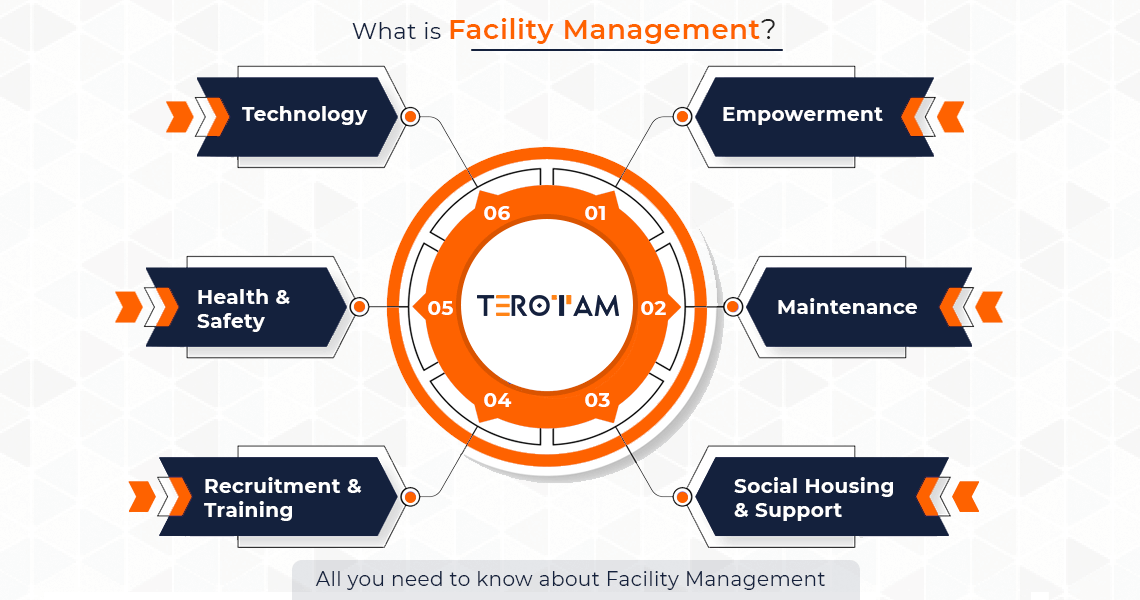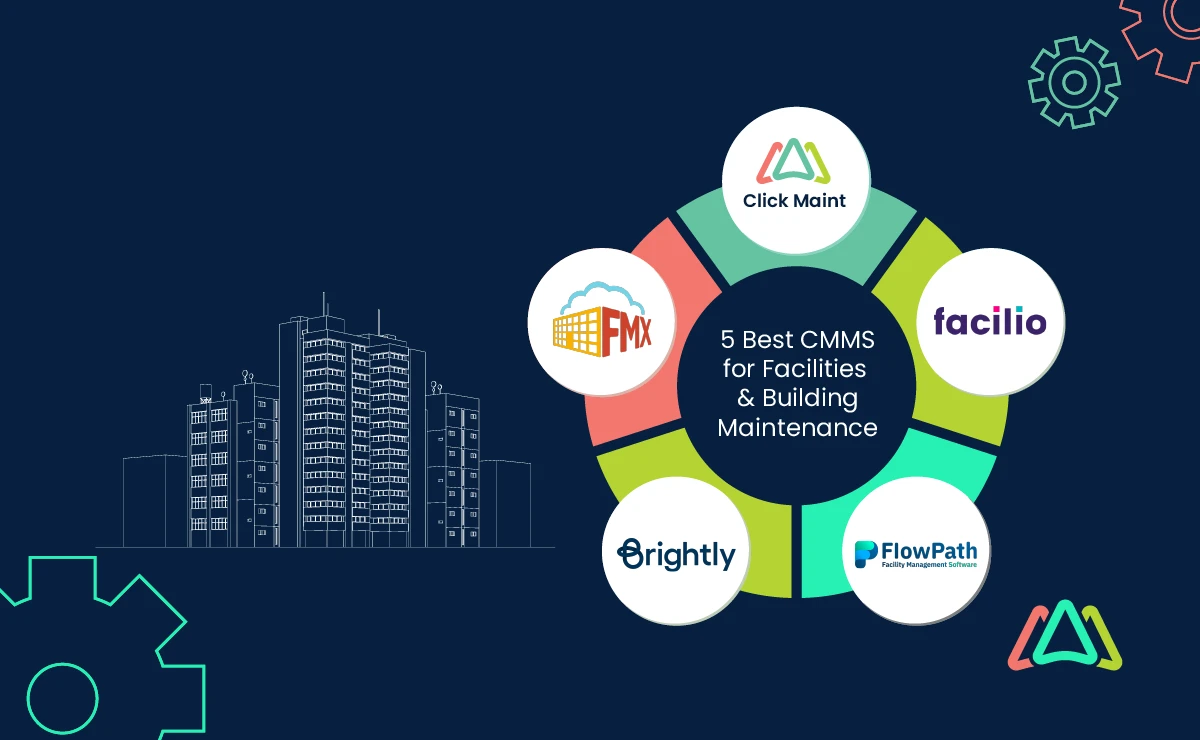Facility Management-- Streamlined Operations and Cost Savings
Facility Management-- Streamlined Operations and Cost Savings
Blog Article
The Crucial Guide to Facility Administration: Strategies for Success
Center monitoring plays a critical duty in the general success of an organization, acting as the backbone that sustains performance, safety and security, and performance. By utilizing critical strategies such as integrated technical solutions and cultivating cross-departmental cooperation, organizations can significantly improve their functional structures. Nevertheless, the subtleties of effective facility administration expand beyond mere logistics and require a thorough understanding of both qualitative and quantitative metrics. As we check out these important approaches, a closer examination discloses how they can change not simply centers, however the actual culture within an organization itself. What might these transformations appear like in practice?
Comprehending Center Monitoring
What comprises effective facility administration? Efficient center administration incorporates the control of numerous business features to make certain that developed atmospheres are safe, reliable, and for efficiency. It integrates the concepts of design, engineering, and service monitoring to develop a smooth operational flow within a company.
Crucial element of center management consist of room preparation, maintenance management, and compliance with wellness and safety and security policies. Area preparation concentrates on enhancing making use of physical sources to sustain business objectives, while maintenance management makes sure that centers are maintained in optimum problem, optimizing life-span and lowering operational costs. Compliance with regulatory and legal standards is essential, as it safeguards the company versus prospective obligations and improves its track record.
Moreover, reliable center administration counts on the calculated use modern technology, such as Structure Monitoring Solution (BMS) and Computer-Aided Facility Management (CAFM) tools. These technologies promote real-time surveillance of structure systems and enhance upkeep processes (Facility Management). Ultimately, a comprehensive approach to center administration not only promotes functional effectiveness but likewise fosters a favorable atmosphere for workers and visitors alike, driving overall business success

Trick Techniques for Optimization
Maximizing facility administration requires a tactical strategy that aligns operational exercise with organizational goals. To achieve this, the very first vital strategy is the application of incorporated technical solutions. Using innovative software systems allows for real-time tracking of center procedures, helping with data-driven decision-making and enhancing total performance.
Secondly, regular evaluations of facility efficiency are crucial. Conducting routine assessments and audits makes it possible for center supervisors to identify areas that need improvement, guaranteeing that resources are designated properly. This proactive method assists in lessening downtime and boosting solution distribution.
An additional essential approach is cultivating cooperation throughout divisions. By urging open communication in between teams, center supervisors can much better straighten their methods with service objectives, causing improved operational synergy. In addition, involving staff in training programs promotes a society of responsibility and enhances their capacity to contribute to optimization initiatives.
Enhancing Security Protocols
Strengthening safety and security methods is crucial for developing a safe environment within facilities. A thorough safety method not just secures site visitors and employees but additionally improves operational effectiveness. Facility Management. To attain this, facility supervisors have to perform routine threat evaluations to ensure and recognize prospective hazards that ideal steps remain in location

Additionally, clear communication channels should be established to report security issues immediately. This consists of developing an accessible platform for workers to voice potential risks or events without worry of reprisal. Additionally, leveraging technology can enhance precaution; as an example, carrying out security systems and gain access to controls assists keep track of facility tasks and limit unapproved entrance.
Last but not least, conformity with regional guidelines and industry criteria is non-negotiable. Routine audits and reviews of safety and security methods guarantee alignment with existing legislations and best techniques. By prioritizing these strategies, center managers can grow a culture of safety and security that secures all stakeholders and ultimately adds to the organization's success.
Improving Office Atmosphere
A favorable workplace setting substantially improves staff member morale and performance, making it an important focus for center management. To produce such an environment, facility supervisors ought to focus on a number of key browse this site aspects, consisting of functional designs, aesthetic appeals, and staff member interaction.
Ergonomic factors to consider are important to lessen physical strain and discomfort. This involves giving adjustable furnishings, correct lights, and appropriate space for activity. These adjustments can cause minimized absenteeism and raised task contentment.
Visual appeals play an essential duty in shaping the office ambience. Making use of color psychology, natural lights, and plant can promote a welcoming and boosting atmosphere. Attentively developed areas can boost creativity and improve overall health.
Moreover, motivating staff member interaction via inclusive decision-making processes can enhance the sense of ownership and belonging. Gathering feedback on workplace improvements and involving employees in the design process can lead to a more tailored environment that meets their demands.
Lastly, advertising health efforts, such as health cares and relaxation spaces, can further contribute to a supportive office society. By concentrating on these methods, facility managers can effectively boost the office atmosphere, driving both employee complete satisfaction and organizational success.
Gauging Success in Facilities
Determining success in center monitoring calls for a thorough approach that assesses both quantitative and qualitative metrics. Measurable metrics normally include key efficiency indicators (KPIs) such as room use rates, power consumption, maintenance prices, and tenancy levels. These Discover More metrics give a clear photo of functional effectiveness and financial performance, permitting facility supervisors to determine locations for enhancement and standard against sector requirements.
Qualitative metrics, on the various other hand, focus on user fulfillment and employee involvement. Studies and feedback systems can gauge exactly how well the go centers meet the demands of residents, aiding to assess the general office environment. This facet is essential, as a completely satisfied workforce is usually linked to boosted performance and retention rates.
To successfully measure success, facility managers need to also think about incorporating technology, such as building administration systems and information analytics devices, to collect and examine pertinent information. Frequently assessing both collections of metrics permits a much more balanced sight of efficiency and informs calculated choices. Inevitably, an effective facility management technique rests on a dedication to continual renovation, ensuring that both operational efficiencies and individual fulfillment are focused on.

Conclusion
Finally, reliable facility management is crucial for boosting organizational efficiency. By applying integrated technological options, performing routine evaluations, and fostering cooperation throughout divisions, organizations can achieve optimum source allotment and operational performance. Prioritizing safety protocols and boosting work environment environments additionally add to raised worker satisfaction. Determining success via both qualitative and measurable metrics permits for continuous enhancement, inevitably leading to decreased operational prices and a more efficient business ambience.
Facility management plays an important duty in the overall success of an organization, serving as the backbone that supports productivity, efficiency, and safety and security.Trick components of center monitoring consist of area planning, maintenance management, and conformity with wellness and safety and security guidelines.Furthermore, effective facility monitoring counts on the critical usage of innovation, such as Building Monitoring Equipment (BMS) and Computer-Aided Center Management (CAFM) tools. Inevitably, a thorough technique to facility management not only advertises functional efficiency but additionally promotes a positive setting for workers and visitors alike, driving overall business success.
Eventually, a successful center administration technique pivots on a commitment to continuous renovation, making sure that both operational performances and user satisfaction are focused on.
Report this page